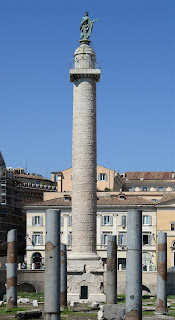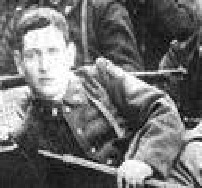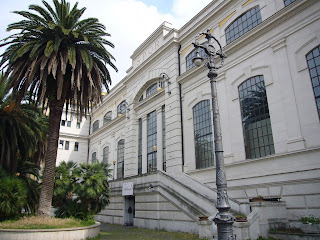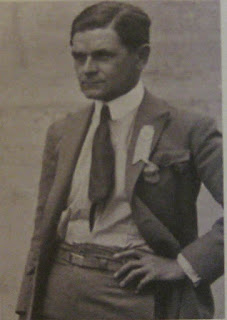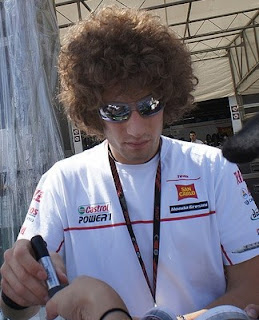Venetian used music as a medium for political protest
 |
| Luigi Nono: the composer who used his music to express his political viewpoint |
Nono, whose compositions often defied the description of music in any traditional sense, was something of a contradiction in that he was brought up in comfortable surroundings and had a conventional music background.
His father was a successful engineer, wealthy enough to provide for his family in a large house in Dorsoduro, facing the Giudecca Canal, while his grandfather, a notable painter, inspired in him an interest in the arts. He had music lessons with the composer Gian Francesco Malipiero at the Venice Conservatory, where he developed a fascination for the Renaissance madrigal tradition, before going to the University of Padua to study law.
Nono appreciated the natural sounds of Venice, in particular how much they were influenced by the water, and as he began to compose works of his own there might have been an expectation that any contemporary influences would have been against a backcloth of ideas rooted in tradition.
Yet the classical Venetian music of Giovanni Gabrieli, Antonio Vivaldi and others could not have been further away from the sounds that would define much of Nono's output.
There was no harmony or melody, none of the things commonly associated with music. Instead, Nono's compositions often comprised strange sounds, generated by conventional instruments and voices, yet difficult to associate with them. Listening to them was uncomfortable but that was their purpose, to defy convention and challenge the listener to be aroused and seek an interpretation, in much the same way that modern art asks the observer to see visual images in a different way.
 |
| Luigi Nono was born in this house on Fondamenta Zattere al Ponte Longo, facing the wide Giudecca Canal |
Yet just as strong an influence was his politics. Like many Italian intellectuals of the post-war period, Nono had been disturbed by the experience of growing up under Fascism. He rebelled in the 1950s by becoming a Communist, following in the footsteps of other well-heeled intellectuals, such as the film director Luigi Visconti.
However, there was nothing faddish or self-indulgent about his interest in left-wing causes. It seemed to be at the roots of his being. "An artist must concern himself with his time," he once said. "Injustice dominates in our time. As man and musician I must protest.
"The genesis of every work of mine springs from some human 'provocation' – an event or a text in our lives which provokes my instinct and my consciousness to bear witness."
Thus he produced pieces such as Il Canto Sospeso - 'The Suspended Song' - which celebrates the heroic deaths of Resistance fighters. Later pieces would highlight revolutionary causes around the world from Mao to Castro yet never was any protesting sentiment expressed in a rousing chorus, rather in distorted and fragmented sounds, the sounds of shouts and screams and rage.
 |
| Nono's grave at the cemetery of San Michele |
Only in his later years did he mellow, when his compositions sought to reflect the stillness and muffled sounds of Venice at its most haunting, in the winter, empty of crowds and shrouded in mists.
Married to the daughter of Arnold Schoenberg, the Austrian composer and music theorist who was an early influence, Nono had two daughters, Silvia and Serena. He died from a liver complaint in 1990. He is buried at the cemetery on San Michele island.
Travel tip:
The Dorsoduro, where Nono grew up, is one of the six sestieri - municipal areas - of Venice, sitting between the Grand Canal and the Giudecca Canal. It is regarded as a good place to get the feel for the more traditional Venice, without the huge crowds and tourist trappings associated with the areas around St Mark's and the Rialto. There are many traditional bacari, the small bars that sell inexpensive small snacks - cicchetti - along with glasses of wine - known locally as ombre, as well as squares where local people meet during the day and students gather at night. Yet it is also home to some fine churches, such as San Sebastiano, full of works by Veronese, and two of the city's most prestigious galleries, the Accademia and the Peggy Guggenheim.
Hotels in Venice from Hotels.com
 |
| The church of San Sebastiano in Dorsoduro has many works by the Venetian Renaissance painter Veronese |
The Giudecca itself - an island divided from the main body of Venice by the wide Giudecca Canal - is perhaps even more representative of the real Venice, if such a thing exists. Rarely a destination for many tourists, apart from the well-heeled ones who stay at the famed Hotel Cipriani at its eastern tip, it was once home to only the residents of a small fishing village. Later it was developed for market gardens and then became fashionable with Venice's wealthier residents as somewhere with space to build their grand houses. More recently, the western end of the island has become home to shipyards and factories. There are plenty of interesting streets and enough bars and local restaurants to satisfy those curious enough to explore.
Hotels in Venice from Expedia
More reading:
How the Baroque master Antonio Vivaldi died penniless in Vienna
Gabrieli's music led the transition from Renaissance to Baroque in music of Venice
How the Venetian Patty Pravo turned her back on classical music for a career in pop
Also on this day:
1966: Fire destroys Venice's La Fenice opera house
(Picture credits: Luigi Nono from Zoeken; Nono's house and San Sebastiano by Didier Descouens; grave by Smerus; all via Wikimedia Commons)
Home





